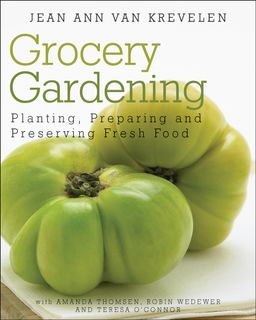The ancient art and science of Feng Shui can be applied not only to your home but also to your garden, as revealed in
Part I of this post.
In fact, the exterior of your home and garden are important ways to create harmony
inside the house, according to Feng Shui consultant Linda Binns, who owns Harmony Inside and Out, LLC.
“Your outdoor areas are an extension of your indoor living spaces,” says Binns. “To create positive energy inside, you need to create a positive feel to the energy that surrounds and leads to your home.”
That’s why
Part II of Feng Shui in the Garden focuses on how to create harmonious energy outdoors by incorporating the five elements of nature – earth, wood, water, fire and metal – in a positive, balanced way in your garden.
“It’s not always practical to represent these natural elements in a literal manner,” she admits. “For example, fire and water features aren’t always possible in apartment settings. However, there are other ways to use these natural elements in a more symbolic way and get a similar effect.”
To get you started, Binns offers these tips for understanding and using the natural elements of Feng Shui in your garden:
Earth: In most gardens, the element of earth is already quite prominent. However, if you live in an urban setting with not a lot of soil and too much concrete, you may need to add more earth.
Bring more earth elements to your outdoor spaces with yellow and cream-colored plants, terra cotta pots or brown furniture. Square and rectangular shapes – such as square stepping stones, rectangular paving bricks, carts or flowers boxes are other ways to bring earth elements to your garden.
Wood: Do you have a lot of greenery in your garden? Then you already have a strong wood presence. Want to add more? Add blue and green elements to your outdoor space, such as the above plant containers. Or, add striped pillows, pots and other accessories. Stripes also represent the wood element in Feng Shui.
Water: From fountains and ponds to swimming pools, there are many ways to add water to your garden. Other ways include flowing pathways, organic shaped garden beds, as well as flags, banners and mobiles. The downward movement of hanging plants also conveys water’s energy.
“Many people associate the color blue with water,” says Binns, “but black is actually the strongest color to represent this element.” Consider adding black iron furniture and black garden accessories, if you need more water energy.
Fire: Outdoor fire pits are a great way to bring the fire element to your garden. But they certainly aren’t the only way. You can add cone-, pyramid- and triangle-shaped trellises and objects. Even conical-shaped trees and plants add the fire element.
Not surprisingly, fire is also represented by the many shades of the color red. That includes pink, burgundy and orange, as in these cheerful orange lanterns.
Metal: Accessories, such as the above decoration, are one way to add metal. But round and arched objects also introduce the metal element. Gazing balls and circular stepping stones are a simple way to add this element, as well as arched trellises.
The color white represents metal too. By adding white painted furniture, rocks or statuary, such as these lovebirds, you can add metal and balance the other natural elements in your yard.
Going Forward: Use your creativity when bringing these natural elements into your home. As you’ve no doubt noticed, objects will often represent several elements, and that’s really the ideal situation.
Take this simple hummingbird feeder, for instance. It not only represents fire energy (red color) but also the water element. Plus, it attracts birds, which bring positive Chi to your home, reports Binns. Birds, animals and people also symbolize fire. So, the white lovebird statues, shown above, can be considered metal as well as fire.
“Over time, you’ll see it’s easy to add natural elements to your garden,” says Binns. “With a little practice, your natural eye will determine how various objects can represent these elements, whether by their design, color or shape. The important thing is to select the items that you enjoy, and have fun while creating a sense of balance and harmony throughout your outdoor spaces.”
Learn more:
Linda Binns of
Harmony Inside and Out, LLC On Twitter:
@LindaBinns
.jpg)
































